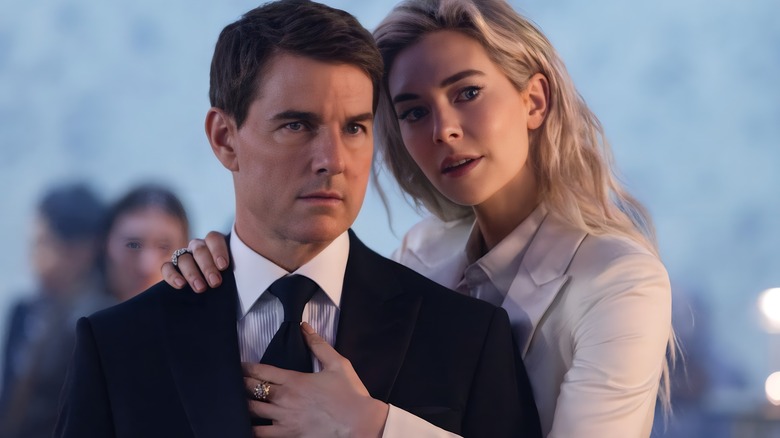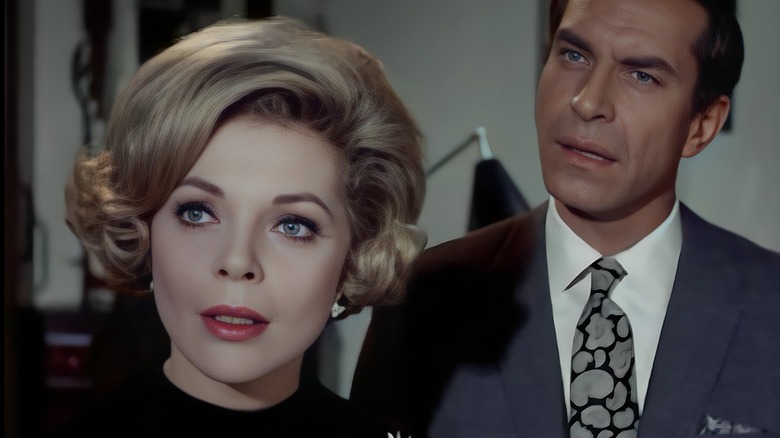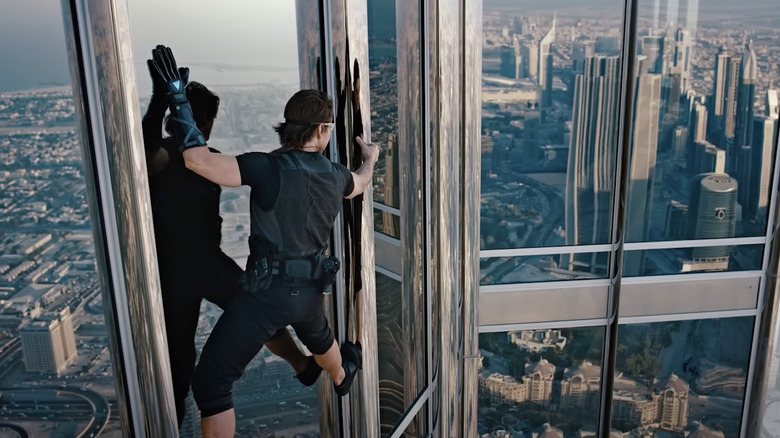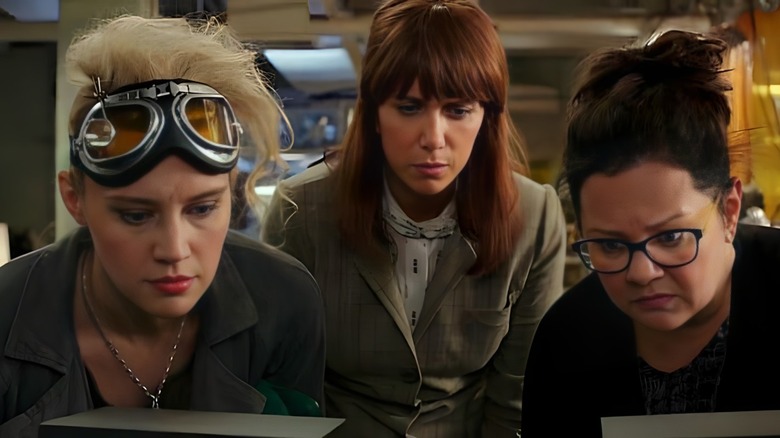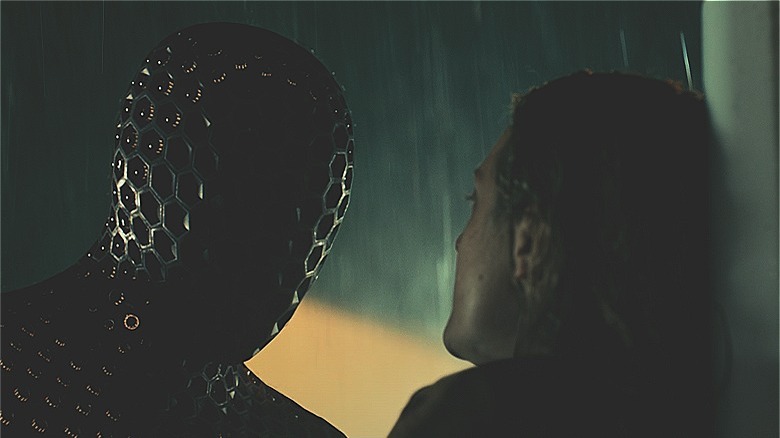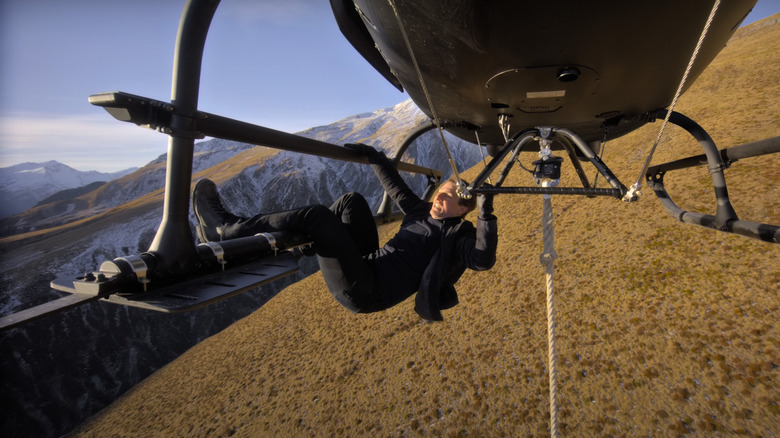Mission: Impossible Improbably Revived A '60s Show - Teaching Franchises A Vital Lesson
"Mission: Impossible" continues to be a shining example of how a franchise can be revived and tailored for modern times.
By no means are Tom Cruise's "Mission: Impossible" films bastions of originality — we're on our seventh one now, itself just the "Part One" of a much larger story. Still, despite existing in the franchise vacuum, Cruise's action spectacles continue to soar to new heights, with marketing emphasizing the actor's latest death-defying stunts. Couple that with A-listers eager to leave their mark on the franchise, and "Mission: Impossible" is effectively one of Hollywood's most bold and interesting movie series. Furthermore, in a cinematic sea landfill dominated by legacy sequels and rotting revivals, "Mission: Impossible" — with its smörgåsbord of gunfights, death-defying stunts, and chase sequences – is the gold standard of how to bring back an old franchise. Because while it's now easy to forget, the first "Mission: Impossible" film was absolutely not an original property concocted by Cruise and Paramount execs during an after-hours, caffeine-fueled pitch meeting in the mid-1990s.
In fact, these films are a revival of a slick spy series that dominated on CBS in the 1960s, famous for its star-studded ensemble cast, and use of inventive gadgets. The series, also titled "Mission: Impossible," followed a group of spies from the Impossible Mission Force who are given carte blanche to bring down nefarious forces operating against U.S. interests. Now, if that sounds similar to Cruise's epics, then you're not mistaken. However, dig a little deeper and you'll notice how both properties are drastically different takes on the same premise.
While Hollywood struggles to cash in on nostalgia, "Mission: Impossible" proves that the right move is to let go of the past, instead of holding it tight.
How Mission: Impossible is different from Mission: Impossible
When "Mission: Impossible" debuted in 1966, audiences were captivated by how the hour-long episodic series explored the complex, gritty world of espionage. Narratively, the series emphasized the importance of racing against the clock, putting its spies in devilish situations, and forcing them to thwart their enemies as soon as possible. There were masks to be worn, an intro that teased key moments from the episode, self-destructing mission assignments disguised as miscellaneous items, and a diverse group of IMF agents who never accepted defeat — it was slick stuff in the 1960s, which is why it was a no brainer to have it revived by the Hollywood machine.
Tom Cruise and his former producing partner Paula Wagner approached Paramount Pictures with a daring idea: take the basic formula of the series, i.e. IMF agents saving the day, and stylistic elements, such as the theme song and reliance on masks, and make it as big and loud as possible. Cruise and Wagner's "Mission: Impossible" was a revival in name only, embracing the essence and spirit of the series, while shedding away the baggage of its convoluted mythology.
Brian De Palma's 1996 film adaptation didn't boast the show's extremely extensive set pieces of competency and effectiveness. Instead of focusing on the best of the best getting the job done, it tapped into recklessness and the power of luck. While the TV show presented a well-rounded team of IMF members, the de Palma film sees the core crew of spies killed off in its opening minutes. The movie made the daring decision to have its lead spy go rogue, on a mission to clear his name, recruiting vagabond and disavowed agents to help clear his name as opposed to "qualified" and morally upstanding operatives.
Mission: Impossible rejected the past ... and become a global phenomenon because of it
In an interview with Go Into The Story, former franchise producer Paula Wagner expressed how the goal was to take the iconic "Mission: Impossible" franchise's quirks, such as its theme music, and hand it over to a capable, blockbuster director who could make it global.
Note how the original "Mission: Impossible" series doesn't feature a slick, charismatic, but physically adept agent like Tom Cruise's Ethan Hunt. That's because there is no Ethan Hunt in the original series. In fact, save for Jon Voight's Jim Phelps, the film franchise doesn't feature any characters from the television drama. To make things even more interesting, the first "Mission: Impossible" film went full "let the past die"-mode and chose to make Voight's Phelps the bad guy, a sacrilegious take for "Mission: Impossible" purists who saw the character as the show's moral center.
Cruise, his producing partners, and Paramount turned the simple spy series into a global phenomenon that continues to truck along to this day, boasting box office receipts north of $3.5 billion. How has the franchise continued its momentum, nearly three decades after it revived? It has no interest in reliving the past. In fact, it outright rejects anything beyond the basic premise of the series, with each filmmaker picking and choosing what they want to incorporate instead of taking everything wholesale.
Compare this to the contemporary philosophy of reviving franchises and making more of the same, it's easy to see why "Mission: Impossible" succeeds — it has no baggage, and more importantly, no reason to play up nostalgia. Hollywood, in its timeless existential crisis to cash in on IP, should lean into how Cruise and Paramount forged their own unique identity with this franchise.
Mission: Impossible forged its own identity ... something most revivals don't
Each "Mission: Impossible" film, up until 2018's "Fallout," featured a brand new director at the helm, bringing with them their own unique sensibilities and visual flair. Whatever the "Mission" was, audiences could expect a different shell surrounding a very familiar center: Tom Cruise being Tom Cruise. The cinematic franchise is not particularly interested in engaging with the television show's emphasis on quiet, stealthily done missions, or an impressive array of competent spies. Instead, these films have become vehicles for some of cinema's most celebrated creatives to use Cruise as a vehicle to tell an engaging action story, with a few mind-boggling set pieces spiced throughout.
Take a look at most revivals and it's difficult to see them forging a unique path — they're always invested in retelling old stories, retaining as much narrative baggage as possible. While this is expected for legacy sequels that reintroduce beloved characters from the past, audiences should expect more from revivals. Consider the 2016 reboot of "Ghostbusters," which functioned as more of a remake of the original 1984 classic, instead of going forward in a new, daring direction like "Mission: Impossible." Note how the 2016 film even features cameos from the original film's stars, teasing their appearances in promotional materials, effectively tying itself to the original's legacy.
The same can be said for 2019's "Charlie's Angels" reboot, which followed what came before it, canonically making it a sequel to the original series, and the reboots from the 2000s. While these two films tried to capture the spirit of the original property, they did so by winking and nodding, instead of paying tribute. A new mask wasn't worn — they were simply cashing in on the name and stylistic recognition, going so far as to bring back older actors to fuel up nostalgia.
Revivals should follow the Mission: Impossible mold - focus on iconography, not story
Most revivals and reboots want to hone in on the past and celebrate the good 'ol times that came before. If Hollywood wants more inspired projects that dominate the multiplex, it should veer away from homages and embrace rejection.
When it comes to mining old IP, studio execs strive to bring back narrative components of the past, instead of simply borrowing iconography and stylistic elements. "Terminator: Genisys," a film that attempted to reboot the iconic franchise, failed partially because of how it relied on the narrative elements of the original film, going as far as to bring Arnold Schwarzenegger. A more inspiring and perhaps more profitable take would have been abandoning the reliance on the franchise's cemented characters, and instead playing around with the original's stylistic elements or visual motifs.
Consider Leigh Whannell's "The Invisible Man," a lean and mean film that takes the original premise of the horror monster's previous outings and transformed it for modern times, ditching old-fashioned science experiments for contemporary tech, creating a story that ties into toxic modern-day social dynamics. A lesser film would have been obsessed with tying it directly to the 1930s classic. Then there's "Mad Max: Fury Road," which treats the iconic titular character as a blank slate that can be adapted from project to project. Even then, director George Miller was more interested in telling Furiosa's (Charlize Theron) story, simply using the character of Max to get audiences to show up. "Fury Road" has a far more responsive legacy than that of the original trilogy, and there's a reason why: it's bold and inventive in how it plays with the franchise's stylings. It expanded on the original's vehicular warfare and ignored the mythology that came before it.
Mission: Impossible is the roadmap if Hollywood wants to mine IP
If there's one thing franchises can learn from "Mission: Impossible," it's to focus specifically on the aesthetic and stylistic charms of the original property. As Hollywood continues to mine IP, it becomes increasingly obsessed with bringing back old characters, or continuing old stories. "Scream V" couldn't resist the temptation of moving on without Neve Campbell and Courtney Cox, and the same can be said for the recent "Halloween" trilogy, which at first soared to new heights thanks to Jamie Lee Curtis' masterful performance, only to crash and burn.
With "Mission: Impossible," the franchise has evolved to the point where most don't even realize that Tom Cruise's adventures are based on a series from before they were born. What franchises could follow suit? Why not a "Knight Rider" film that retains the gung-ho spirit of the original but has the flair of a "Fast and Furious" film? An action-packed adventure that blends vehicular warfare and police drama could still retain the synth-bathed essence of the original. Just don't try and tie it into the David Hasselhoff original. Or why not take the base premise of "Bewitched," and give it a surreal, "Twin-Peaks"-like aesthetic to forge a modern-day horror classic? Lean hard into the paranoia of living in suburbia as a witch. Just look at the success of "WandaVision."
As the years go by, audiences continue to become fed-up with reboots and revivals that feel as if they're more of the same. Cashing in on name alone for "one last ride" and bringing in former cast members doesn't have the appeal it once did. Can Hollywood succeed in this impossible mission to revive the past? Yes, if they choose to accept it.
